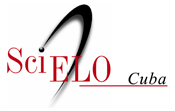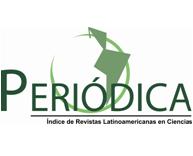WASTES SHRIMP CHEMICAL TREATMENT FOR CHITIN OBTAINING
Keywords:
ozone, chitin, shrimp wastesAbstract
Introduction:
Wastes from crustacean processing plants can be used to obtain chemically defined compounds that have applications in different industries. This wastes have valuable components such as proteins, minerals and chitin, which if not exploited would become environmental pollutants.
Objective:
To evaluate chemical treatment of shrimp wastes Litopenaeus vannamei for chitin obtaining.
Materials and Methods:
Shrimp wastes, head and exoskeleton, were conditioned and subsequently subjected to depigmentation with ethanol and ozone; demineralization with HCl (1 and 5 mol/L); and deproteinization with NaOH (1 mol/L) to obtain chitin at laboratory scale. Raw material was characterized and yield in each stage was determined.
Results and Discussion:
Stages of depigmentation and demineralization of Litopenaeus vannamei shrimp wastes influence the subsequent stages to obtain chitin, so exoskeleton was selected to continue the process. Ozone was the bleaching agent with best results. In deproteinization stage, it was not possible to work at the appropriate temperature to meet its objective, which will be affecting the deacetylation stage of chitin.
Conclusions:
The differences in chemical composition of the evaluated shrimp wastes influence the obtaining chitin and chitosan stages f. As a result, operating conditions in depigmentation and demineralization stages allowed selecting the exoskeleton to obtain chitin and chitosan. Temperature in deproteinization stage did not guarantee this stage efficacy.
Downloads
Downloads
Published
How to Cite
Issue
Section
License

This work is licensed under a Creative Commons Attribution-NonCommercial 4.0 International License.



















